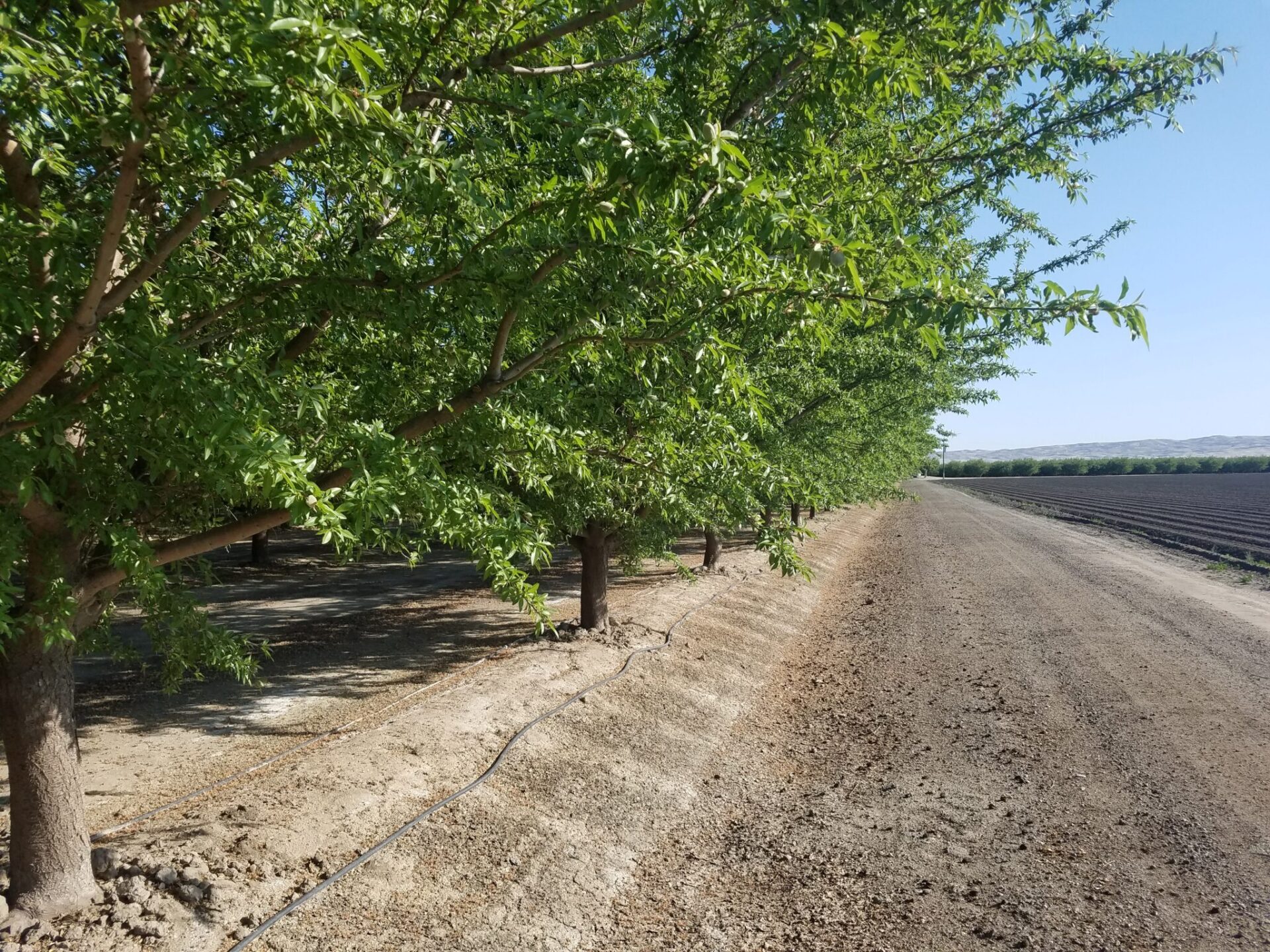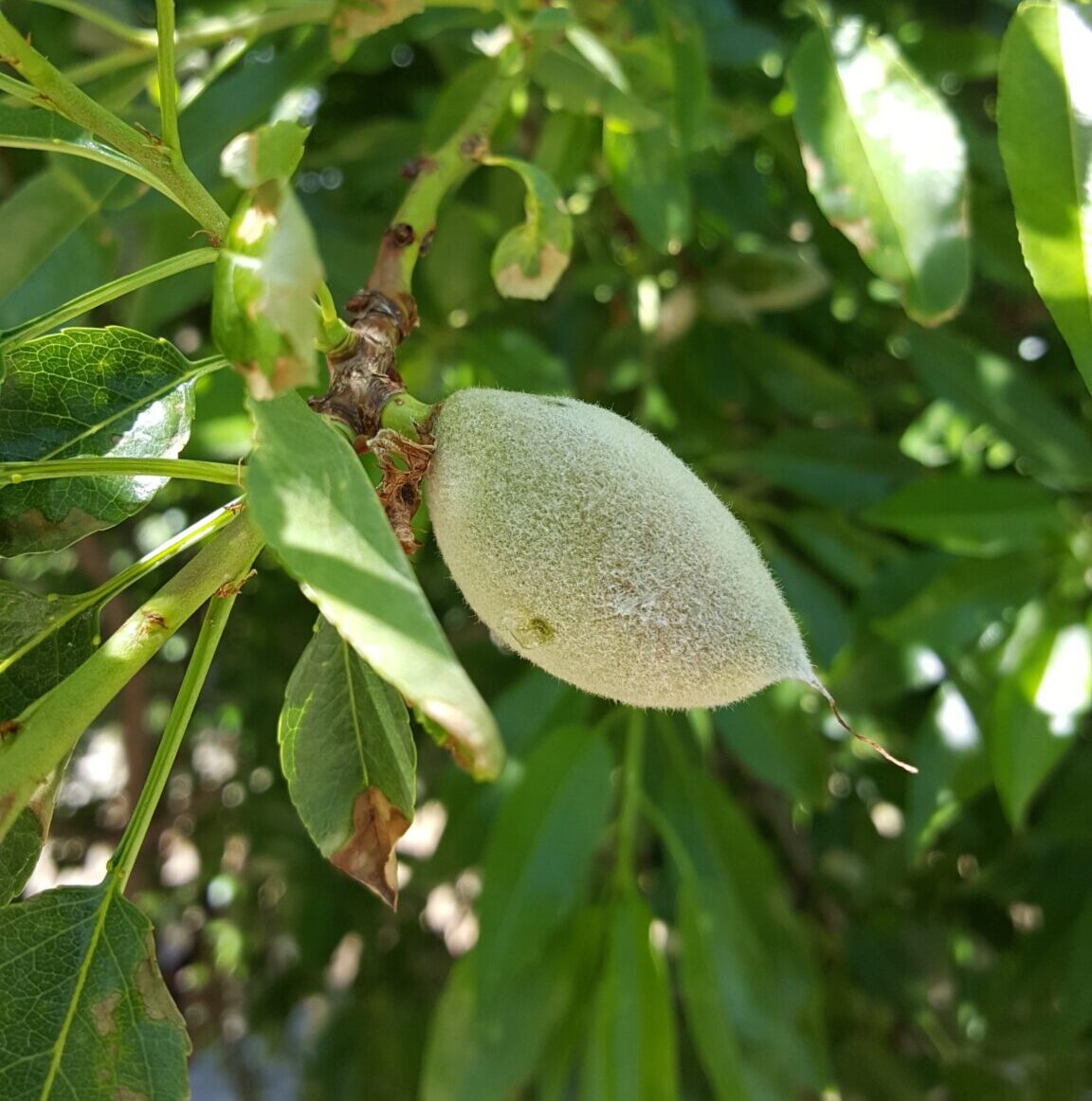
Low almond prices may encourage almond growers to reduce or alter management inputs for pests, nutrition and irrigation in their orchards. But experts say growers need to consider when it is safe for the crop and the tree to cut costs and resources without damaging the tree or future yields, and decisions should be made on an orchard-by-orchard, case-by-case basis.
Nutrition Management
The decision to cut back on nutrient inputs will depend on the orchard. More often than pest management, there will be instances where cutting an input will not be feasible. One question to ask is: What nutrients are heavily drawn down and need to be attended to every year?
According to Patrick H. Brown, professor of Plant Nutrition at UC Davis, nitrogen and potassium are typically drawn down heavily in almond orchards, and micronutrients are critical to almond production as well. In all cases, these nutrients will need to be replaced every year to maintain long-term productivity; however, smaller potassium applications or no micronutrient applications in a lean year may be adequate if there are reserves within the orchard.
“I think if you’ve got a moderately rich soil, you can cut back on potassium 30% to 40%,” Brown said. “You can cut back on foliar fertilizers and use basic fertilizers, and keep zinc and boron levels up because they’re essential for next year’s flowering.”
Brown noted that in all cases, aim for replacement of removed nitrogen at the very least. “Growers should always maintain their nitrogen according to the demand of the crop,” he said.
If growers are simply looking for a cheaper source of nitrogen, Brown said that there is none cheaper than the nitrogen present in irrigation water, and he recommends testing for nitrogen at a lab to offset any fertilizer costs.
Cutbacks on nutrients in a lean year will ultimately depend on previous soil and leaf tissue analyses and if they show that there are reserves in the orchard. “If [growers] have got good records, they can make that choice to cut back this year,” Brown said.
Irrigation Management
Due to low precipitation this past winter and low surface water allocations, growers are going into the season with lower quality water than previous years. High salinity, high sodicity, high toxic ion counts and/or high bicarbonate counts can cause irrigation water to be low in quality.
Irrigating with low-quality water requires a more thought-out approach, and it is recommended by UCCE personnel that growers get a sense of where they’re starting from before making any decisions. Katherine Jarvis-Shean, UCCE orchard advisor for Yolo, Solano and Sacramento counties, said that irrigating with low-quality water depends on how long the water shortage is presumed to last.
“When it comes to irrigating with low-quality water, it matters if it’s a one- or two-year issue or if we’re going to be in a drought,” she said.
Damage induced by low-quality water can come in the form of growth and yield reduction, water infiltration issues and potential for plugging. These short- and long-term impacts can end up potentially costing a grower more in the long run as a result of lasting damage. Thus, Jarvis-Shean said that in certain situations where growers are seeing severe forms of damage as a result of low-quality water, irrigating less may be a viable corner-cutting option.
“If you’re getting well into the red zone [for salinity damage], that might be a time to think about adding less water because what you’re adding is going to be so high in salts that it will be hard to undo the damage of that over many years,” she said.
Jarvis-Shean noted that if growers have to use low-quality water to irrigate their crop, summer is the most preferable time to do so as later stages of the crop are less vulnerable to stress related to water quality. “We’re getting into the stage in almonds right now where it isn’t too detrimental to stress the crop.”
To learn more about ways growers may be able to cut corners in a lean year, visit cecolusa.ucanr.edu/newsletters/Orchard_Topics89319.pdf.

Pest Management
Cost cutting for pest management depends mainly on the type of pest being managed.
Arthropod pests, including navel orangeworm (NOW), spider mites, peach twig borer (PTB) and leaffooted bug, do not require the same spray treatments every year, and, according to David Haviland, UCCE entomology farm advisor in Kern County, sprays can be reduced at the timing referred to as ‘May sprays’.
May sprays originated with PTB and referred to the timing at which insecticide applications should be made, based on degree-day models, to control PTB if they had not already been controlled during the dormant season or bloom, he said. However, damage by PTB has become almost irrelevant in California orchards.
“They really aren’t needed anymore,” Haviland said referring to PTB sprays. “Biological control is pretty good. We just don’t see damage for peach twig borer like we did 15 or 20 years ago. For old school, traditional growers that still put on sprays for peach twig borer, that’s certainly not something that’s needed anymore.”
Haviland noted that on rare occasions, growers may only need May sprays for PTB if at least four shoot strikes are easily visible on mature bearing and young non-bearing trees in late April.
Similar to PTB, NOW also presents a tricky situation for growers when it comes to May sprays. Haviland said that some growers want to treat in May as a way to get ahead of NOW before hullsplit, but the timing is not as effective as spraying at hullsplit.
“For growers that want to spray once, hullsplit is definitely when you want to do it,” he said. “If they want to spray twice, hull split and then two to three weeks later would be the best time to do that.
“As far as navel orangeworm sprays in May, the only time you would really want to do that is if you are in such a dire situation that you need more than two sprays, in which case May sprays can help, although there are questions on whether or not that’s actually a good return on investment,” he said.
Another common target for May sprays is the spider mite. In the early 2000s, May sprays were common for controlling spider mites before hullsplit to prevent population growth later in the year. However, Haviland said treatment looks much different today.
“We don’t see that that’s the case anymore,” he said. “Things have changed with almond production where growers are using very “green” production practices in terms of pesticides, and as a result, biological control for spider mites is typically very good in April and May such that miticides are rarely needed.”
Haviland recommends cost-conscious growers consult a PCA for monitoring spider mites, noting that miticides should only be applied in April or May if a treatment threshold of 40% of leaves infested has been reached. Additionally, he said, if predator traps show at least one sixspotted thrips in one sticky trap card per week, the threshold for adequate biological control is achieved and May sprays will not be necessary.
As with PTB, NOW and spider mites, insecticide applications for leaffooted bug are the exception, not the norm. From March to May, Haviland said to monitor almond orchards for the presence of leaffooted bugs, gummosis associated with a puncture mark on the almond hull and aborted nuts, especially in orchards with a history of leaffooted bug damage or that are near good overwintering sites like riparian areas.
“If found at levels that are not acceptable, consider a treatment. Otherwise, save your money,” he said.















